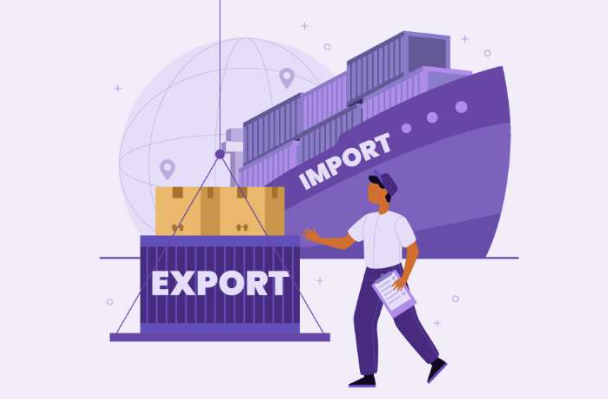 Trade Data
Trade Data
 28-06-2024
28-06-2024
In today's globalized economy, expanding your business internationally can significantly boost growth and revenue. However, finding the right buyers in foreign markets can be a daunting task. Fortunately, export data offers a wealth of information that can help you identify and connect with potential buyers worldwide. This article will explore how you can leverage export data to find global buyers and expand your market reach.

Understanding Export Data
Export data refers to the detailed records of goods shipped from one country to another. This data is typically collected by customs authorities and includes information such as:
Product description and HS codes: A standardized system to classify traded products.
Quantity and value: Information on the volume and worth of goods exported.
Exporting and importing countries: Details on the origin and destination of goods.
Exporter and importer names: Identifying the companies involved in the trade.
By analyzing this data, businesses can gain insights into market trends, competitor activities, and potential buyers.
How to Access Export Data
Several platforms and services provide access to export data. Some popular options include:
Government databases: Many countries offer public access to their export data. For example, the U.S. Census Bureau provides trade data through its USA Trade Online platform.
Commercial data providers: Companies like Tendata, ImportGenius, and Datamyne offer comprehensive trade data services, often with advanced analytics tools.
International organizations: Organizations like the World Bank and the International Trade Centre (ITC) provide global trade statistics and databases.
Using Export Data to Find Buyers
Here are some practical steps to use export data to identify and connect with potential global buyers:
1. Identify Target Markets
Start by analyzing export data to identify countries with high demand for your products. Look for trends in import volumes and values to pinpoint markets where your products are popular. For example, if you manufacture electronic components, you might find high demand in countries with robust electronics industries like China, Germany, or South Korea.
2. Analyze Competitor Activity
Export data can reveal which countries your competitors are exporting to and who their buyers are. This information can help you identify potential buyers already interested in similar products. By understanding your competitors' strategies, you can refine your approach and target markets more effectively.
3. Build a List of Potential Buyers
Once you've identified target markets, use export data to compile a list of potential buyers. Look for importers who have consistently imported products similar to yours. This list can serve as a starting point for your outreach efforts. For example, if you produce specialty chemicals, you can find importers in countries with significant chemical industries and focus on those with a history of importing similar products.
4. Research Buyer Profiles
Export data often includes information about the importing companies. Use this data to research potential buyers' profiles, including their business size, import history, and product preferences. This information can help you tailor your sales pitch and establish more meaningful connections. For instance, if a potential buyer has a history of importing high volumes of a specific product, you can emphasize your capacity to meet large orders and ensure consistent quality.
5. Develop a Targeted Outreach Strategy
With a list of potential buyers and detailed profiles, develop a targeted outreach strategy. Craft personalized messages that highlight how your products meet their specific needs and solve their problems. Use the insights gained from export data to demonstrate your understanding of their market and build trust. For example, if a buyer has been importing from multiple suppliers, you can emphasize your reliability and ability to provide consistent supply.
Case Study: A Real-World Example
Consider the case of a U.S.-based manufacturer of industrial machinery looking to expand into Asian markets. By analyzing export data, they discovered a high demand for their machinery in India and Vietnam. They identified several importers in these countries and researched their profiles, learning about their import history and business operations. With this information, the manufacturer developed a targeted outreach strategy, emphasizing their machinery's unique features and competitive pricing. As a result, they successfully established new partnerships and significantly increased their export sales.
Conclusion
Export data is a powerful tool for finding global buyers and expanding your business internationally. By leveraging this data, you can identify target markets, analyze competitor activities, build a list of potential buyers, research buyer profiles, and develop targeted outreach strategies. With the right approach, you can unlock new opportunities and drive growth in the global marketplace. Start using export data today to find your next global buyer and take your business to new heights.
Tendata iTrader compiles trade data from 218 countries and provides detailed information on over 130 million import-export enterprises worldwide.
With a daily influx of 10 billion trade records, Tendata efficiently delivers contact details for over 700 million top-level executives and decision-makers in the import-export industry through advanced filtering. This includes email addresses, phone numbers, social media profiles, and more. Additionally, we offer synchronized company profiles, product images, and website links, along with 19 types of visual reports. These tools assist foreign trade enterprises in precise market positioning and thorough market analysis, enabling you to quickly find the exact buyers and suppliers you need.
(>> Visit the Official Shanghai Tendata Website for More Details <<)

Category
Leave Message for Demo Request or Questions


 T-info
T-info T-discovery
T-discovery

 My
Tendata
My
Tendata Market Analysis
Market Analysis Customer
Development
Customer
Development Competitor
Monitoring
Competitor
Monitoring Customer Relationship
Customer Relationship





































































































































